Posted August 2, 2019
May 17, 2019
After a night in Plymouth, our adventures took us further afield into Cornwall and Bodmin Moor [map]. Driving past the ever present windmills and fields of the English countryside, we first stopped at a pair of stone monuments. These would have been the bases for wooden crosses, one of which bears an inscription commemorating King Dungarth (Doniert in Latin), the last King of Cornwall who is purported to have drowned nearby in 875 AD.

According to English Heritage, the Latin inscription on the shorter stone (Doniert’s) is translated as “Doniert has asked [for this to be made] for his soul[’s sake’]”.
The taller fragment has no commemoration, but its proximity to King Doniert’s stone and the discovery of an underground cross-shaped tunnel beneath the stones indicate this was an important early Christian site in the 9th Century.
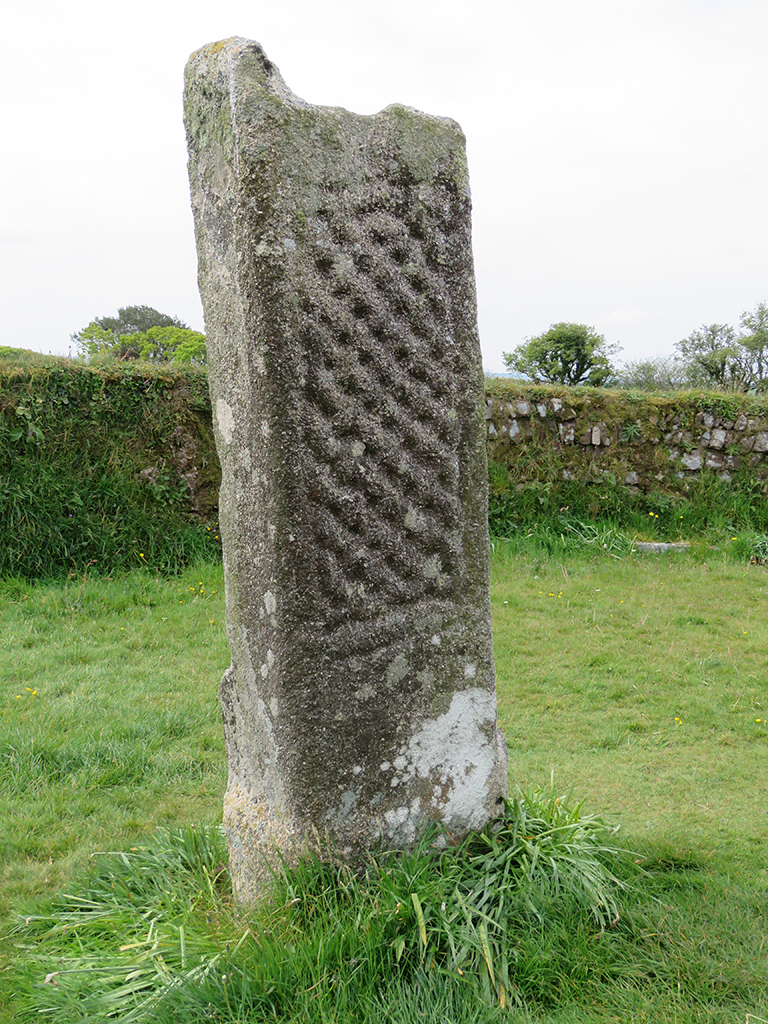
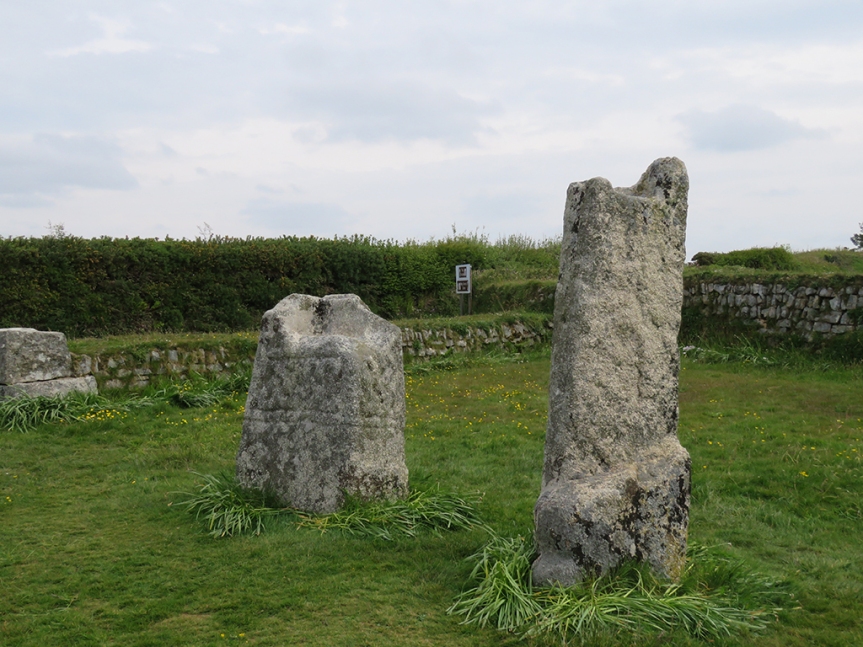
From these ancient memorials, we made our way along the southeast edge of Bodwin Moor to the village of Minions. In this post-Despicable Me world, it was all too easy to snort-laugh and bring images of Gru’s mostly loyal underlings to mind. It seems to be a common enough thought.

The biggest attractions here are The Hurlers stone circles and a natural landmark called the Cheesewring. The Hurlers are a set of 3 remnant stone circles and a pair of stone markers (“The Pipers”) from the Bronze Age. Many of the stones have been eroded away or “borrowed” as building material through the centuries.

The three circles are nearly in alignment and thus likely intentionally related. The local legend has it that the stones are in fact transformed men who dared to play the ancient game of Hurling on a Sunday and were cursed. It must have been some game!
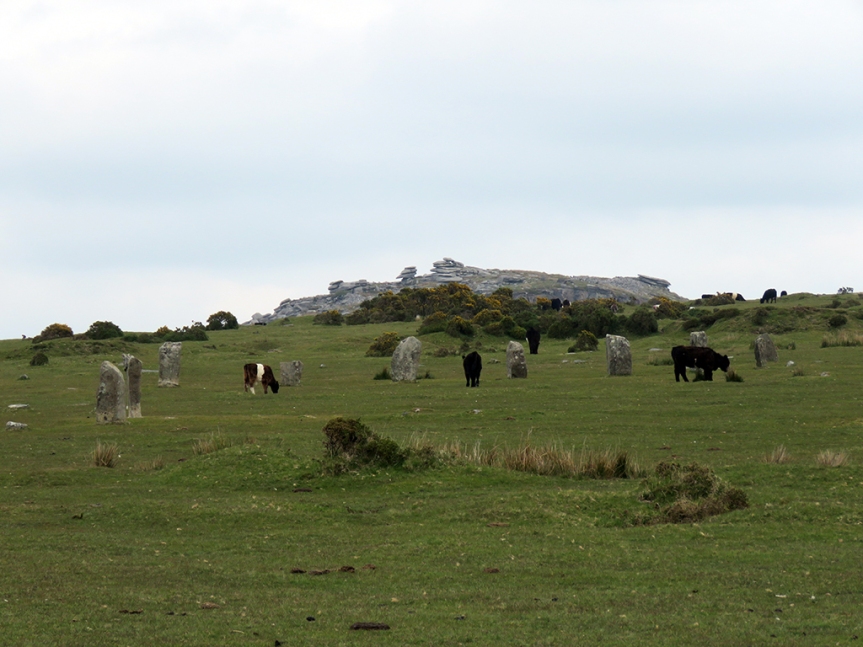
Close up, the stones are placid, yet evocative of ancient and mysterious cultures and beliefs. Through the ages people have ascribed all manner of mystical energies associated with stone circles, and it’s easy to see why. It’s awe inspiring to see this ancient handicraft, abandoned yet so accessible.
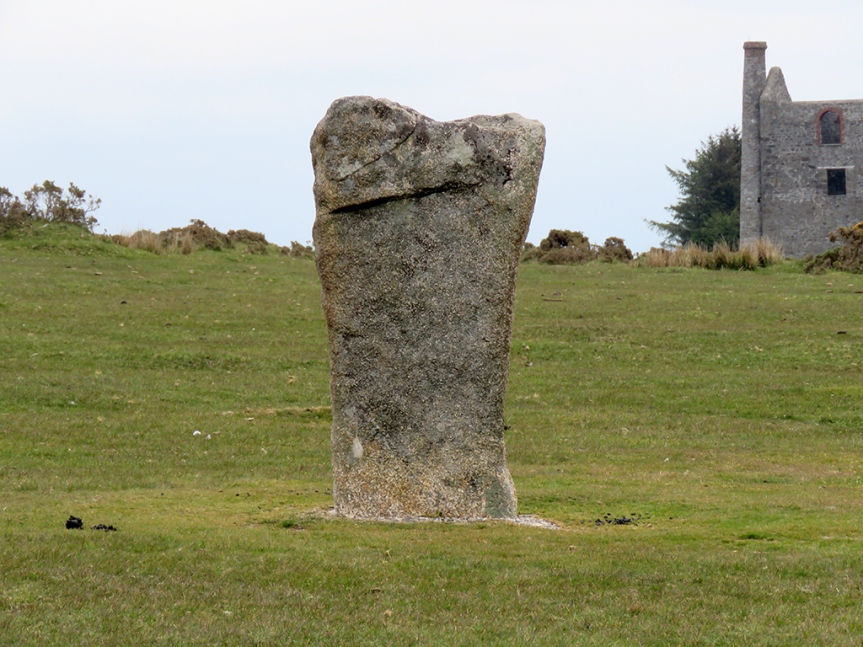
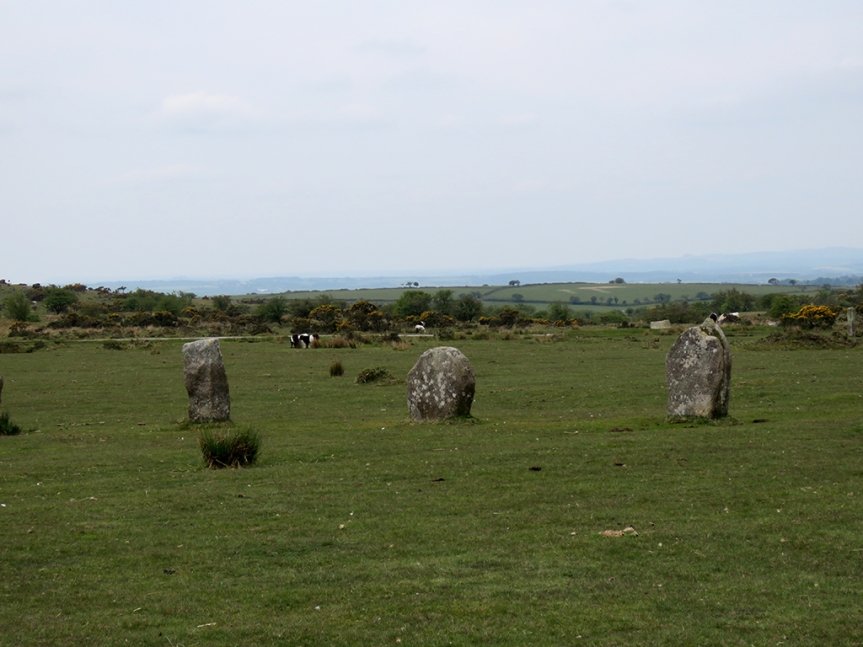
Nearby the stones were several building ruins. These used to house large steam engines, which helped drive pumps to keep water out of the mines as well as circulate air.
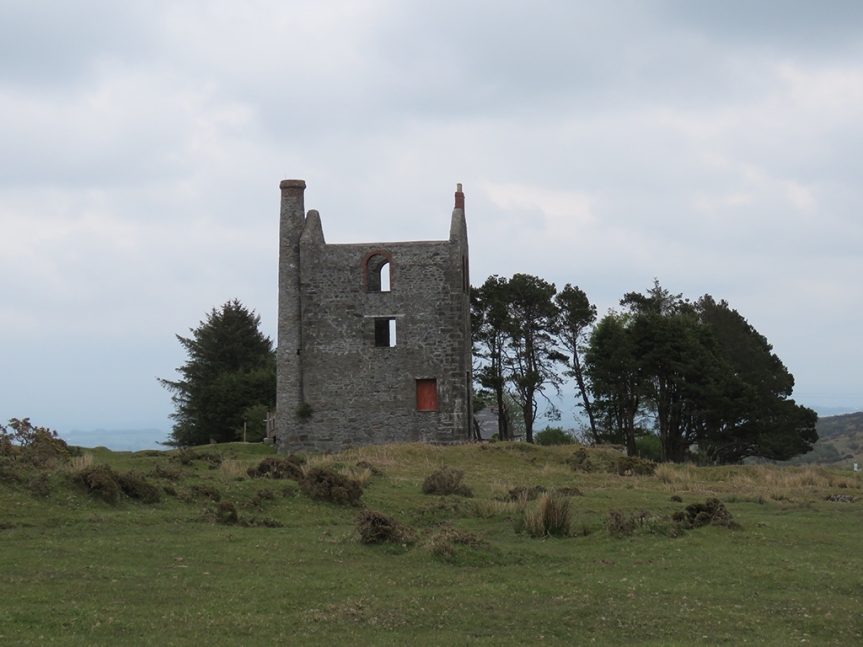
Much of the area beneath the Hurlers consists of mining tunnels, and some of the rumpled appearance of the landscape is due to subsidence. It’s unlikely one would simply drop through the ground casually walking, but it was perhaps best practice to avoid any obvious “dips” or potholes.
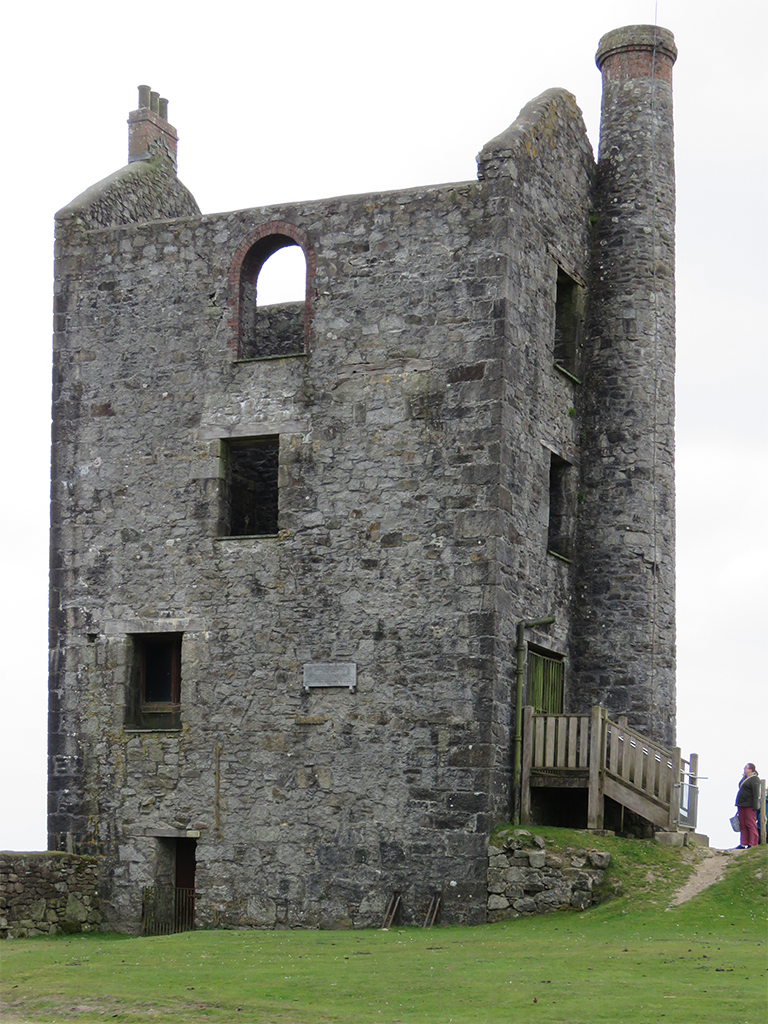
It’s nearly impossible to separate mining from Cornwall, or indeed much of southwest England and Wales. Just about every site we visited had evidence of mining from the 18th through the 21st Century.
After taking our fill of the Hurlers, we made the hike up Stowe’s Hill toward the Cheesewring, one of several granite outcrops sculpted by the wind over countless years. These are not artificial structures.
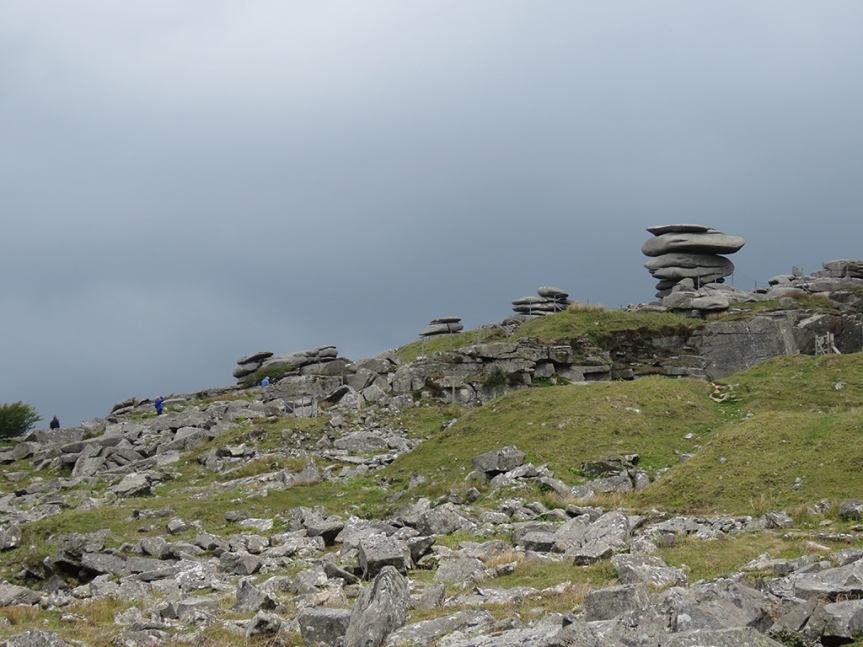
The Cheesewring gets its name from it’s somewhat similar appearance to cheese slabs that were pressed in its namesake device generations ago.
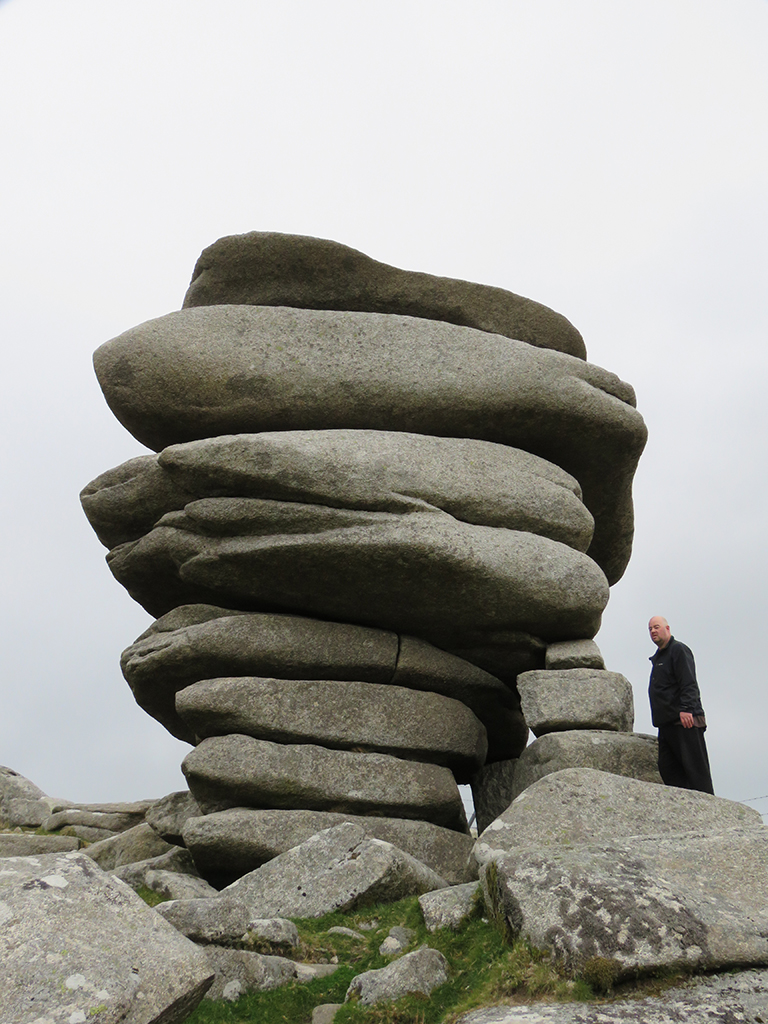
The top of the tor overlooks the countryside and some well used granite quarries. Darren says that a lot of the granite here was used in London, particularly for Tower Bridge. The top of Stowe’s Hill provided us with some good vistas, despite the ever threatening rain showers and obscuring mist.

As with most of the rural sites we visited, cattle and sheep have free rein and are grazing just about everywhere. There was evidence of grazing all the way to the top of Stowe’s Hill and right around the Cheesewring and the other outcrops.

We made our way back to Minions and (after meeting back up with Ruth, who had some other business to attend to) drove back to Devon and onto Dartmoor. We stopped at the Two Bridges Hotel (in the village of Two Bridges, where else).
Tea, as you may not know, is actually a light meal in Britain, not just a hot beverage. A Cream Tea is tea served with scones, clotted cream, and jam. We had heard a lot about this from Ruth and Darren, but unwittingly stumbled into a long running feud between Devon and Cornwall.

According to those from Devon, the “proper” way to have Cream Tea is to split the scone in two, spread the cream first and then put the jam on top. The Cornish way is to put the jam on first and then spoon the cream on top. Ruth is a proponent of the Devonshire method while Darren prefers the Cornish method.

There was much good-natured jibing, and I have to say I preferred the Cornish way (you get more of the cream taste that way), but no matter how you take it, this was a real highlight of the trip for me. Plus, my hot chocolate (in lieu of the tea and its caffeine) was amazing as well.
With full bellies we made our way back out and drove further into Dartmoor, making a stop at picturesque Postbridge and its medieval clapper bridge. Clapper bridges are simple slabs of rock placed across a river to cross it. In this case, two piers of stone were placed as supports.
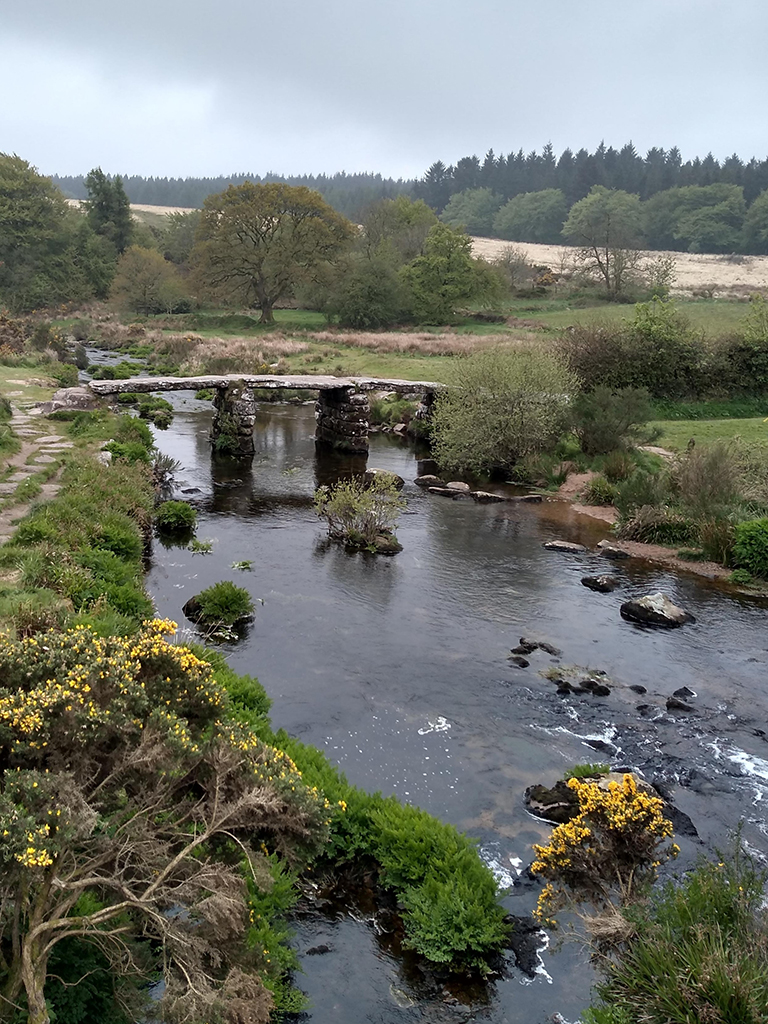
The adjacent roadway bridge was beautiful as well.
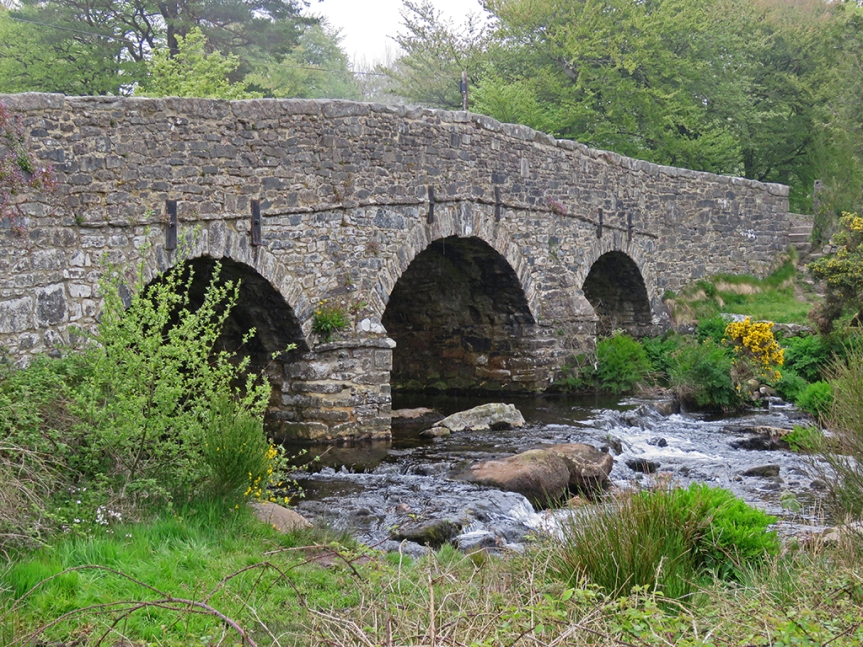
While we were admiring the view (and I was passively birdwatching), I noticed some commotion. A woman had been trying to rescue a Common Kingfisher and it had tried to get out of the cardboard box it was in and had fallen into the cold water below.

A traveler who was hiking his way along the river immediately waded in and scooped up the bird, which was now shivering with cold, and the woman asked if we knew anyone who could help. I suggested any local wildlife rehabilitators, and she said she had tried and had no luck. Her intention was to dry and warm up the bird and give it time to recover and then release it. We wished her luck and thanked the man, who went on his way, wet and cold himself.
There were other interesting birds by the river as well, including a White-throated Dipper, gathering invertebrates of some kind, likely to feed its young. Dippers are fun little birds. They are adept at running along the bottom of fast moving streams, often completely submerged in pursuit of prey. They can also dive and swim quite well.

Another short drive brought us to Burrator Reservoir on the River Tavy and a nearby nature trail. Burrator provides some of the drinking water for Plymouth and surrounding places.
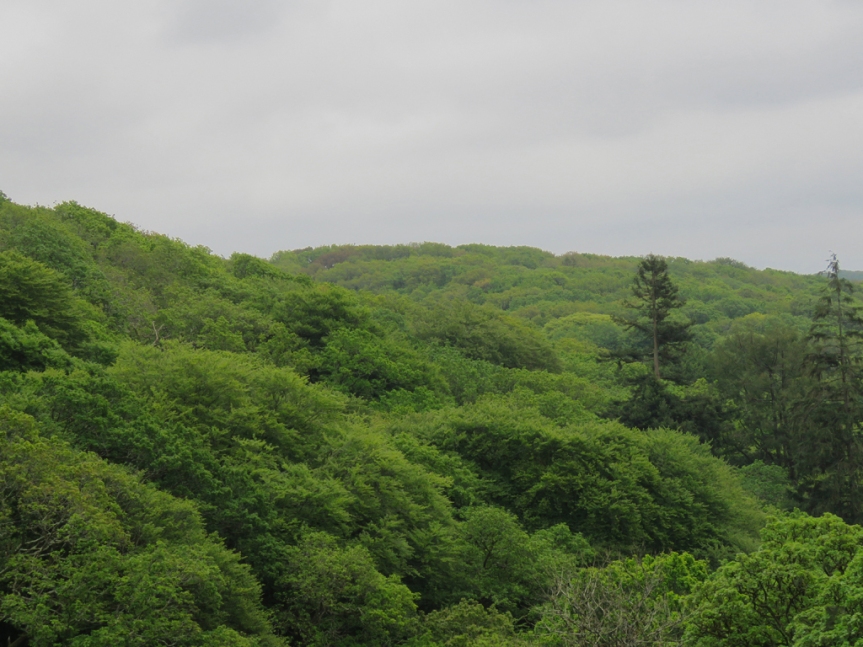
It was quiet around the reservoir with not much traffic and the weather was calm, and the sun had peeked out every now and then.
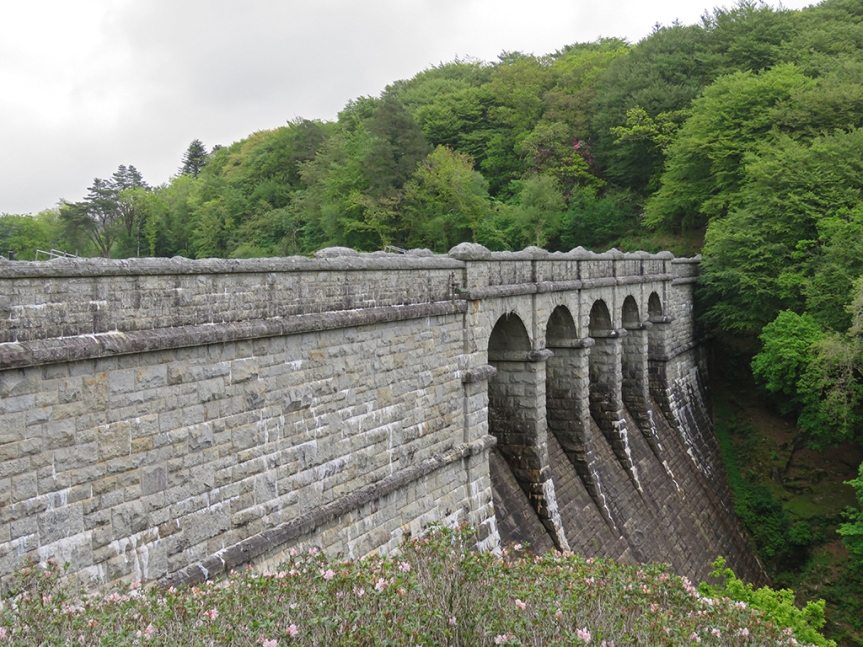
We made our way along a trail after passing a small but beautiful waterfall and cascading stream. The sound backdrop was serene and almost idyllic.
The vegetation here seemed well suited to damp weather, with many of the older trees covered in moss.
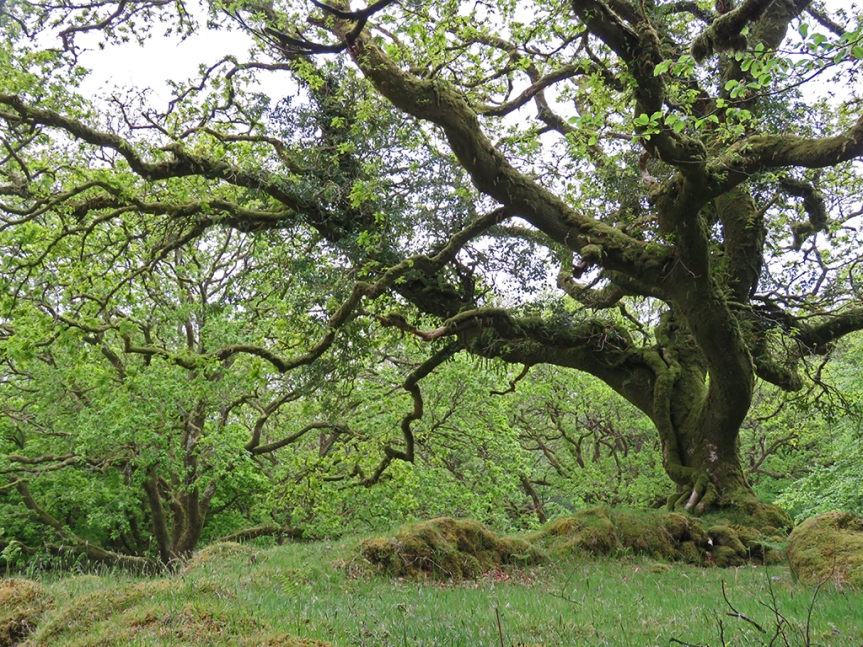
As we walked the ground gently rose as we make our way up onto the moor. Even here, there were cows grazing and resting in fenced off fields. In Britain, the concept of conservation is a bit different than here in the States. Here, the usual focus of environmental conservation revolves around preservation or the return of the landscape to some idealized natural state. In Britain, the majority of conservation efforts involve preservation of rural landscapes, such as farms, villages, and grazing lands.
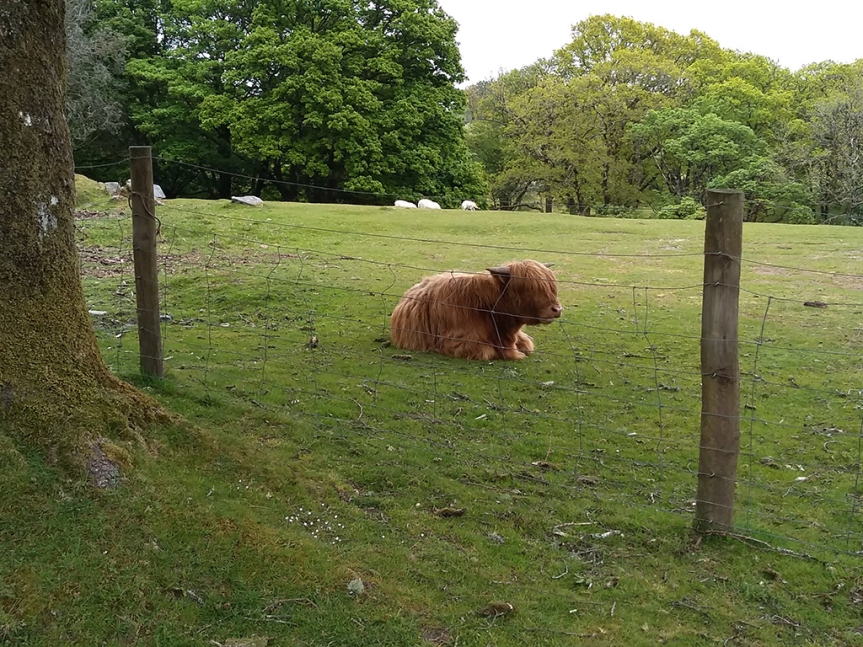
All the while we were walking up the path, birds were singing and darting in and out of the trees. This included Willow Tits (differentiated by their song), Coal Tits, and quite a few songs I could not identify.

We didn’t walk much farther and turned back down the trail to the car park (that’s a parking lot, fellow Americans) and headed to our last stop of the day, at Lopwell Ford, on the River Tavy.
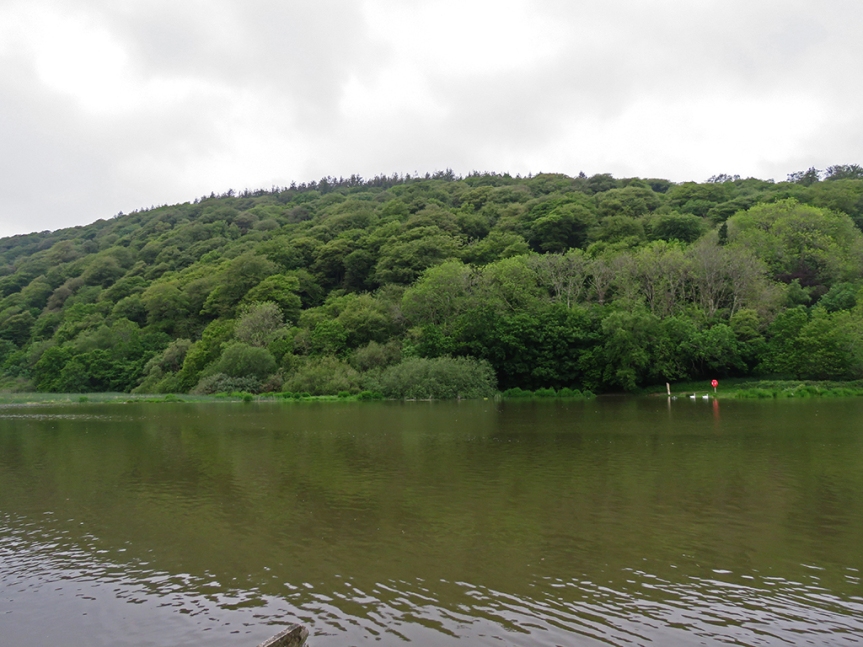
The water level was fairly high, and we could see it rise on the level indicator signs in the river. When the water is lower, vehicles can cross (ford) the river and get to the other side. Suffice it to say, without a taller vehicle like a truck or SUV with a snorkel, we weren’t managing that! But is was a pretty stop.
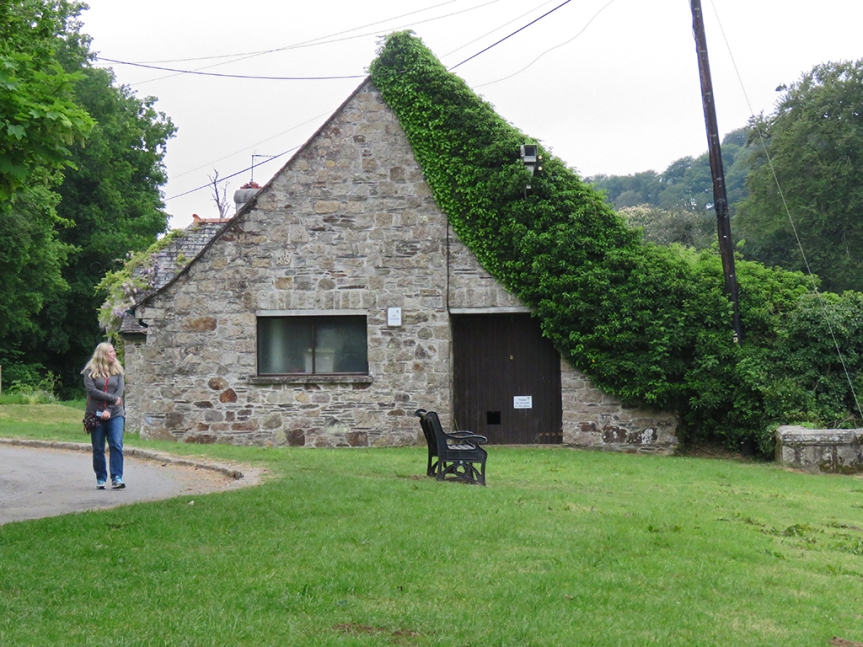
With that, it was back to Bristol to plan our next days’ excursions. Dartmoor is an amazing place, and I can imagine spending two weeks just exploring that area alone. But for us, it was on to the next!
